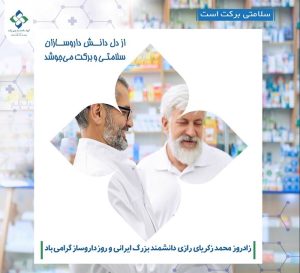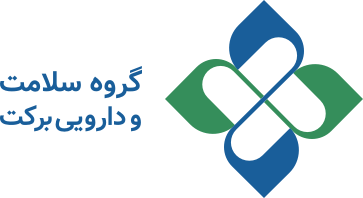
فهرست مطالب
برای امتیاز به این نوشته کلیک کنید!
[کل: 1 میانگین: 5]
Traditional Medicine on Instagram: Healing Wisdom or Digital Exploitation
Barekat Health & Pharmaceutical Group: Traditional Iranian medicine is deeply rooted in centuries of cultural heritage, accumulated through observation, experience, and community-based healing. Many households still remember their grandmothers’ herbal prescriptions—soothing teas, anti-inflammatory poultices, and natural tonics passed down through generations. Yet today, this age-old legacy finds itself in an entirely new arena: social media.
Instagram, in particular, has become a stage for influencers—some entirely lacking medical credentials—to dispense “natural cures” with unmatched confidence. These digital prescribers often blur the lines between cultural wisdom and unverified advice, leaving audiences vulnerable. Meanwhile, public trust in conventional healthcare is, in some contexts, waning.
Users seek alternatives perceived as safer, cheaper, and more accessible—often without understanding the risks. This report aims to dissect the role and reach of traditional medicine on Instagram, distinguishing authentic healing from opportunistic trends, and offering a scientific and social critique of the phenomenon.
Traditional Medicine—A Sacred Legacy in Need of Scientific Reconciliation
Traditional medicine in Iran encompasses a vast reservoir of indigenous healing practices developed over centuries. While rich in cultural depth, much of its knowledge base remains anecdotal and has not undergone systematic scientific validation. In recent years, academic institutions have made efforts to test some of these methods using evidence-based protocols, seeking to incorporate credible elements into modern healthcare systems.
However, Instagram often disregards this critical distinction between validated treatments and untested remedies. The majority of traditional medicine content online is shared without scientific backing.
These posts frequently recommend combinations that may interact dangerously with pharmaceuticals or lack any clinical foundation. The absence of strict regulatory oversight allows misinformation to flourish unchecked, undermining the potential legitimacy of traditional knowledge.
Instagram’s Algorithm vs. the Integrity of Traditional Healing
Instagram favors content that evokes emotion, entertains, or shocks—rewarding virality over veracity. As such, dramatic “before-and-after” stories, miracle cures, and simplified jargon outperform nuanced, evidence-based insights. In this environment, traditional medicine is often reduced to a sensational product, stripped of its original context.
Rather than educating audiences, many influencers capitalize on attention-grabbing claims to build personal brands and drive sales. Treatments once grounded in holistic philosophy are now distorted for clicks and conversions. As popularity and monetization become central, science fades into the background—replaced by the currency of likes, shares, and follower counts.
Profits in the Guise of Healing—Hidden Economy Behind Digital Remedies
Behind many popular Instagram pages lies a thriving gray market. Products like slimming teas, herbal antidepressants, and detox kits are packaged attractively and sold directly via private messages—often without official approval, labeling, or traceability. Many accounts even accept direct bank transfers, operating entirely outside legal pharmaceutical channels.
These practices pose significant health risks while generating profits that sometimes exceed those of licensed pharmacies. Instagram has inadvertently become a marketplace where unqualified individuals exploit the cultural appeal of traditional remedies to run lucrative operations under the radar of public health institutions.
Psychology of Trust—Why Audiences Embrace Digital Herbalists
Several factors drive users to trust online traditional medicine influencers: growing dissatisfaction with conventional healthcare systems, high treatment costs, easy access to online content, and persuasive user testimonials presented in relatable formats like reels and stories.
The appeal of natural, side-effect-free solutions—often paired with vibrant visuals and simplified language—makes these posts especially compelling. For many, a visit to the doctor is associated with fear, expense, or bureaucracy. In contrast, an Instagram story offering instant relief feels more welcoming. This trend exposes serious gaps in public health literacy and underscores the urgent need to improve community education around scientific thinking, critical analysis, and safe health practices.
Where Are Health Authorities and the Media?
The silence of regulatory bodies and mainstream media has compounded the problem. Simply banning pages or issuing warnings is insufficient. The true remedy lies in crafting engaging, evidence-based content that can compete in the same digital spaces.
The Ministry of Health, medical universities, and national drug authorities must build localized educational campaigns, partner with credible health influencers, and proactively participate in digital health discourse. Collaboration with platforms like Instagram to regulate unsafe content is crucial. Meanwhile, schools must integrate media literacy and health education into curricula to prepare future generations for navigating digital misinformation.
Reform, Not Rejection—A Path Forward for Traditional Medicine
Traditional medicine is a cultural cornerstone that deserves preservation—but also modernization. Wholesale rejection is neither feasible nor wise. Instead, a scientific reevaluation and intelligent regulation can elevate its potential.
Dialogue between conventional and traditional practitioners must be encouraged. Verified, licensed pages offering balanced, science-informed traditional guidance should be amplified.
Traditional medicine is a cultural cornerstone that deserves preservation—but also modernization. Wholesale rejection is neither feasible nor wise. Instead, a scientific reevaluation and intelligent regulation can elevate its potential.
Dialogue between conventional and traditional practitioners must be encouraged. Verified, licensed pages offering balanced, science-informed traditional guidance should be amplified.
Above all, users must learn that digital aesthetics are no substitute for credibility. With the right approach, Instagram can become a platform for responsible health communication—not a threat to public wellbeing. But this requires informed users, ethical content creators, and proactive governance.
Conclusion
Traditional medicine on Instagram stands at a crossroads—between the promise of public health empowerment and the peril of commercial exploitation. While the platform offers potential for cultural outreach and education, the lack of oversight, scientific grounding, and ethical accountability makes it a growing threat to informed decision-making.
Traditional medicine on Instagram stands at a crossroads—between the promise of public health empowerment and the peril of commercial exploitation. While the platform offers potential for cultural outreach and education, the lack of oversight, scientific grounding, and ethical accountability makes it a growing threat to informed decision-making.
The solution lies not in censorship, but in reform: promoting scientific literacy, building trust, and investing in strategic digital presence by health institutions. Only then can traditional medicine reclaim its value—not as a tool for profit, but as a legitimate component of holistic care in the modern world.
برای امتیاز به این نوشته کلیک کنید!
[کل: 1 میانگین: 5]
مطالب مرتبط
-
Barkat Group specialized meeting

-
Safa Appointed as Barekat General Director

-
Barekat Health & Pharmaceutical Group at the 10th Iran Pharma Exhibition

-
Ali Safa visits Sobhan Oncology & Sobhan Darou

-
Pirsalehi & Safa visit Saman Daroo 8 Knowledge-based Company

-
Barekat Managing Director Visits Samen Pharmaceutical Company

-
Honoring Pharmacists’ Day

-
Barekat Top Executives Visiting to Barekat Hospital

